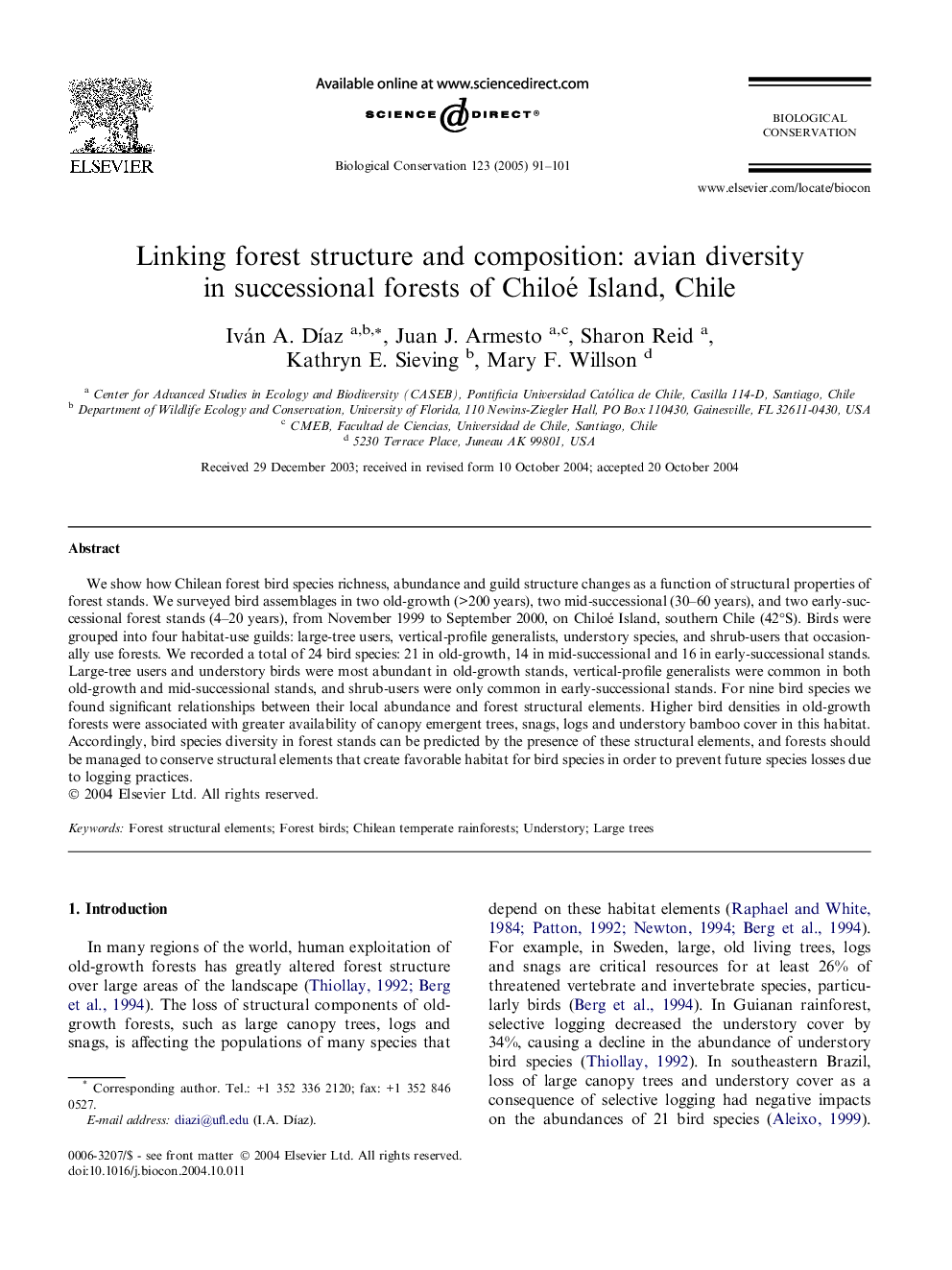| Article ID | Journal | Published Year | Pages | File Type |
|---|---|---|---|---|
| 9445943 | Biological Conservation | 2005 | 11 Pages |
Abstract
We show how Chilean forest bird species richness, abundance and guild structure changes as a function of structural properties of forest stands. We surveyed bird assemblages in two old-growth (>200 years), two mid-successional (30-60 years), and two early-successional forest stands (4-20 years), from November 1999 to September 2000, on Chiloé Island, southern Chile (42°S). Birds were grouped into four habitat-use guilds: large-tree users, vertical-profile generalists, understory species, and shrub-users that occasionally use forests. We recorded a total of 24 bird species: 21 in old-growth, 14 in mid-successional and 16 in early-successional stands. Large-tree users and understory birds were most abundant in old-growth stands, vertical-profile generalists were common in both old-growth and mid-successional stands, and shrub-users were only common in early-successional stands. For nine bird species we found significant relationships between their local abundance and forest structural elements. Higher bird densities in old-growth forests were associated with greater availability of canopy emergent trees, snags, logs and understory bamboo cover in this habitat. Accordingly, bird species diversity in forest stands can be predicted by the presence of these structural elements, and forests should be managed to conserve structural elements that create favorable habitat for bird species in order to prevent future species losses due to logging practices.
Keywords
Related Topics
Life Sciences
Agricultural and Biological Sciences
Ecology, Evolution, Behavior and Systematics
Authors
Iván A. DÃaz, Juan J. Armesto, Sharon Reid, Kathryn E. Sieving, Mary F. Willson,
